Athlete training and health are intricately intertwined, forming the foundation for achieving peak performance and a fulfilling athletic journey. From the rigorous demands of physical training to the importance of proper nutrition and rest, each aspect plays a crucial role in shaping an athlete’s success.
This exploration delves into the multifaceted world of athlete training and health, uncovering the secrets to optimizing performance and maximizing potential.
This journey encompasses a comprehensive overview of training programs, encompassing strength training, endurance training, interval training, plyometrics, and flexibility training. We will also delve into the critical role of nutrition in supporting athletic performance, emphasizing the importance of consuming adequate calories, macronutrients, and micronutrients for optimal energy levels, muscle recovery, and overall health.
The significance of rest and recovery is paramount, highlighting the physiological processes involved in muscle repair and adaptation during rest, including sleep, active recovery, and massage therapy. Furthermore, we will discuss common health concerns and risks associated with athletic training, including overuse injuries, dehydration, heat stress, and nutritional deficiencies, along with key preventive measures athletes can take to minimize these risks.
The Importance of Training for Athletes
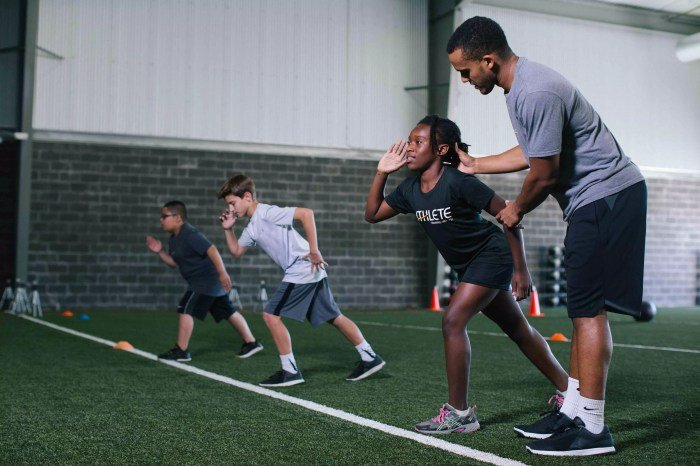
Training is an indispensable pillar for athletes across all disciplines, acting as the foundation for achieving peak performance and maintaining overall well-being. It goes beyond simply exercising; it involves a systematic and structured approach that targets specific physical and mental aspects crucial for athletic success.
Training Enhances Physical Capabilities
Training programs are designed to enhance various physical attributes essential for athletic performance. These include:
- Strength: Strength training involves lifting weights or using resistance to build muscle mass and increase force production. This is crucial for power sports like weightlifting, sprinting, and throwing events.
- Endurance: Endurance training focuses on improving the body’s ability to sustain physical activity over extended periods. This is essential for long-distance running, cycling, swimming, and other endurance-based sports.
- Speed: Speed training involves drills and exercises that help athletes improve their acceleration and top speed. This is critical for sports like sprinting, swimming, and field events.
- Flexibility: Flexibility training involves stretching and mobility exercises to improve the range of motion in joints and muscles. This is essential for preventing injuries, improving posture, and enhancing overall athletic performance.
- Coordination: Coordination training involves drills and exercises that improve the athlete’s ability to control their movements and synchronize their body parts. This is crucial for sports that require precise movements, such as gymnastics, dance, and martial arts.
Training Programs Improve Performance and Reduce Injury Risk
Well-structured training programs can significantly improve athletic performance and minimize the risk of injuries.
- Performance Enhancement: Training programs tailored to specific sports can help athletes improve their speed, strength, endurance, flexibility, and coordination, ultimately leading to better performance and achieving personal bests.
- Injury Prevention: Training programs that incorporate proper warm-up, cool-down, and progressive overload can help athletes develop stronger muscles, improve flexibility, and enhance their body’s ability to handle stress, reducing the risk of injuries.
Types of Training Programs for Athletes
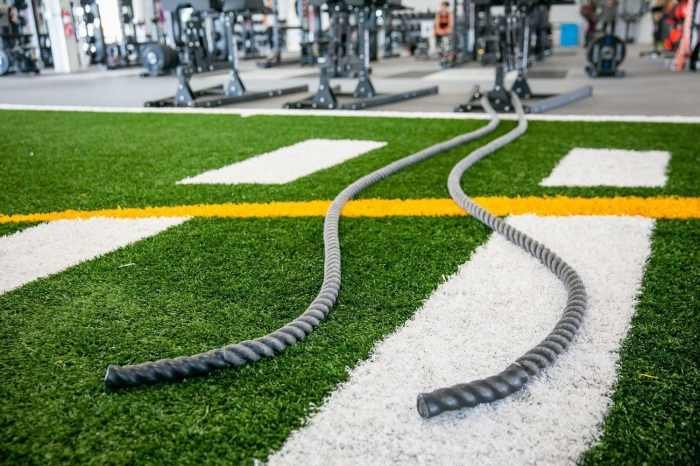
Athletes employ various training programs to enhance their performance, improve fitness, and prevent injuries. These programs are tailored to the specific demands of each sport and athlete’s individual needs.
Strength Training
Strength training is crucial for athletes, as it increases muscle mass, strength, and power. This type of training involves lifting weights or using resistance to challenge muscles.
- Benefits:Strength training improves athletic performance by increasing power, speed, and explosiveness. It also helps athletes maintain proper form and technique, reducing the risk of injuries.
- Objectives:The primary objectives of strength training include increasing muscle mass, strength, and power. It also enhances bone density and improves overall body composition.
- Suitability:Strength training is beneficial for all athletes, regardless of their sport. It is particularly important for athletes in sports that require power and strength, such as weightlifting, sprinting, and jumping.
Endurance Training
Endurance training focuses on improving the body’s ability to perform prolonged physical activity. It typically involves sustained, low-intensity exercise for extended periods.
Maintaining peak physical condition is crucial for athletes, requiring a holistic approach to training and health. This includes access to high-quality medical care, and in the Braintree, MA area, Atrius Health stands out as a trusted provider. Their team of professionals can help athletes navigate injury prevention, rehabilitation, and overall wellness, ensuring they can stay on top of their game.
- Benefits:Endurance training enhances cardiovascular fitness, improves lung capacity, and increases the body’s ability to utilize oxygen efficiently. It also helps athletes recover faster from intense training sessions.
- Objectives:The main objectives of endurance training include improving aerobic capacity, increasing cardiovascular fitness, and enhancing the body’s ability to use energy efficiently.
- Suitability:Endurance training is particularly important for athletes in endurance sports, such as long-distance running, cycling, and swimming. It is also beneficial for athletes in other sports who need to maintain a high level of fitness for extended periods.
Interval Training
Interval training involves alternating between periods of high-intensity exercise and periods of rest or low-intensity exercise. This type of training helps athletes improve their speed, power, and endurance.
Athlete training often requires access to specialized equipment and facilities. A great resource for athletes looking to take their training to the next level is Capital Fitness , which offers a wide range of equipment and programs tailored to meet the specific needs of athletes.
From strength training and cardio to recovery and rehabilitation, Capital Fitness can help athletes reach their full potential and maintain optimal health.
- Benefits:Interval training improves cardiovascular fitness, enhances anaerobic capacity, and increases speed and power. It also helps athletes recover faster from intense training sessions.
- Objectives:The primary objectives of interval training include improving anaerobic capacity, enhancing speed and power, and increasing cardiovascular fitness.
- Suitability:Interval training is suitable for athletes in various sports, including running, cycling, swimming, and team sports. It is particularly beneficial for athletes who need to improve their speed and power.
Plyometrics
Plyometric training focuses on developing explosive power and strength by utilizing the stretch-shortening cycle. It involves exercises that combine stretching and contracting muscles to generate maximum force.
- Benefits:Plyometrics enhances power, speed, and explosiveness, improving performance in sports that require quick and powerful movements. It also helps athletes improve their balance and coordination.
- Objectives:The main objectives of plyometrics include increasing power, speed, and explosiveness. It also enhances balance and coordination.
- Suitability:Plyometrics is particularly beneficial for athletes in sports that require explosive movements, such as sprinting, jumping, and throwing. It is also suitable for athletes in team sports who need to react quickly and change direction.
Flexibility Training
Flexibility training focuses on improving the range of motion in joints and muscles. It involves exercises that stretch and lengthen muscles, enhancing flexibility and reducing the risk of injuries.
- Benefits:Flexibility training improves range of motion, reduces muscle soreness, and helps prevent injuries. It also enhances performance by allowing athletes to move more freely and efficiently.
- Objectives:The primary objectives of flexibility training include improving range of motion, reducing muscle soreness, and preventing injuries. It also enhances performance by improving flexibility and mobility.
- Suitability:Flexibility training is beneficial for all athletes, regardless of their sport. It is particularly important for athletes in sports that require a wide range of motion, such as gymnastics, dance, and martial arts.
Sample Training Program
A sample training program incorporating various training methods is as follows:
| Day | Training Type | Exercises | Sets | Reps | Rest |
|---|---|---|---|---|---|
| Monday | Strength Training | Squats, Bench Press, Deadlifts | 3 | 8-12 | 60-90 seconds |
| Tuesday | Endurance Training | Running, Cycling, Swimming | 1 | 30-60 minutes | – |
| Wednesday | Flexibility Training | Dynamic Stretching, Yoga | 1 | 15-20 minutes | – |
| Thursday | Interval Training | Sprints, Hill Repeats, Interval Swimming | 3 | 4-6 intervals | 1-2 minutes |
| Friday | Plyometrics | Box Jumps, Depth Jumps, Jump Squats | 3 | 8-12 | 60-90 seconds |
| Saturday | Rest or Active Recovery | Walking, Light Stretching | – | – | – |
| Sunday | Rest or Active Recovery | Yoga, Pilates | – | – | – |
This sample program provides a general framework, and athletes should adjust it based on their individual needs, training goals, and sport.
Nutrition for Athlete Performance: Athlete Training And Health

Nutrition plays a crucial role in supporting athletic training and performance. It provides the energy, nutrients, and building blocks your body needs to train effectively, recover quickly, and perform at your best. Proper nutrition fuels your workouts, helps your muscles rebuild after exercise, and supports your overall health.
Calorie Intake
The number of calories you need daily depends on your activity level, age, gender, and body composition. Athletes generally require more calories than sedentary individuals due to their increased energy expenditure during training and competition.
Macronutrients
Carbohydrates
Carbohydrates are the primary source of energy for your body, especially during intense exercise. They are broken down into glucose, which is used by your muscles for fuel. Athletes should aim to consume a moderate amount of carbohydrates, particularly complex carbohydrates, such as whole grains, fruits, and vegetables.
Proteins
Protein is essential for muscle growth and repair. After exercise, your muscles need protein to rebuild and become stronger. Athletes should consume adequate protein to support muscle growth and recovery. Good sources of protein include lean meats, poultry, fish, eggs, dairy products, and beans.
Fats
Fats are an important source of energy and help your body absorb certain vitamins. Athletes should focus on consuming healthy fats, such as those found in avocados, nuts, seeds, and olive oil.
Micronutrients
Vitamins and Minerals
Vitamins and minerals are essential for a wide range of bodily functions, including energy production, muscle function, and immune system support. Athletes should ensure they are consuming a variety of fruits, vegetables, and whole grains to meet their micronutrient needs.
Practical Tips for Athletes
Meal Planning
Plan your meals and snacks in advance to ensure you are consuming adequate calories and nutrients.
Hydration
Water is essential for athletic performance. Dehydration can lead to fatigue, muscle cramps, and decreased performance. Drink plenty of water throughout the day, especially before, during, and after exercise.
Supplement Use
Supplements can be helpful for athletes, but they should not replace a healthy diet. Talk to your doctor or a registered dietitian to determine if supplements are right for you and to get recommendations for appropriate dosages.
Rest and Recovery for Athletes
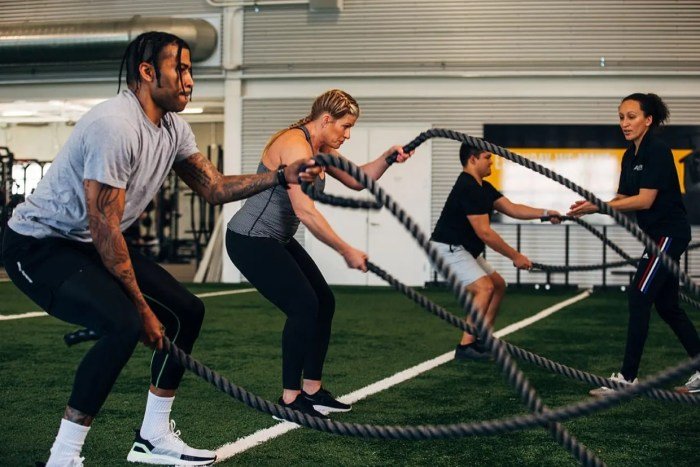
Rest and recovery are often overlooked components of athletic training, but they are just as crucial as exercise itself. Adequate rest allows the body to repair and rebuild muscle tissue, adapt to training stress, and prevent injury. Without sufficient rest, athletes risk overtraining, burnout, and decreased performance.
The Importance of Rest and Recovery
Rest and recovery are essential for optimizing athletic performance. During periods of rest, the body undergoes several physiological processes that are vital for muscle growth, adaptation, and injury prevention. These processes include:
- Muscle Repair and Adaptation:During exercise, muscle fibers experience microscopic tears. Rest allows the body to repair these tears and rebuild stronger, more resilient muscle tissue. This process, known as muscle protein synthesis, is essential for muscle growth and adaptation to training stimuli.
- Energy Replenishment:Exercise depletes the body’s energy stores, primarily glycogen. Rest allows the body to replenish these stores, ensuring that athletes have sufficient energy for subsequent training sessions and competitions.
- Hormonal Balance:Exercise triggers the release of stress hormones like cortisol. Rest allows these hormone levels to return to normal, promoting recovery and preventing overtraining.
- Mental and Emotional Recovery:Athletes often experience mental and emotional fatigue from intense training. Rest allows the mind and body to recharge, improving focus, motivation, and overall well-being.
Sleep
Sleep is a critical component of rest and recovery. During sleep, the body releases growth hormone, which plays a vital role in muscle repair and growth. Sleep also helps to regulate hormone levels, reduce inflammation, and improve cognitive function.
Athletes should aim for 7-9 hours of quality sleep each night to optimize recovery and performance.
Active Recovery
Active recovery involves engaging in low-intensity activities, such as walking, swimming, or light cycling, during rest days. This type of recovery helps to improve blood flow, reduce muscle soreness, and maintain cardiovascular fitness. Active recovery can also help to prevent stiffness and promote flexibility.
Massage Therapy
Massage therapy can be a beneficial tool for athletes seeking to enhance recovery and reduce muscle soreness. Massage helps to improve blood flow, reduce muscle tension, and promote relaxation. It can also help to increase range of motion and flexibility.
Incorporating Rest Days into Training Programs
It is crucial to incorporate rest days into training programs to allow the body sufficient time to recover. The frequency and duration of rest days will vary depending on the intensity and volume of training. Athletes should listen to their bodies and take rest days when needed.
Signs of overtraining include:
- Increased fatigue and muscle soreness
- Decreased performance
- Loss of motivation
- Increased risk of injury
Managing Fatigue, Athlete training and health
Fatigue is a natural response to exercise. However, it is important to manage fatigue effectively to prevent overtraining. Strategies for managing fatigue include:
- Adequate Sleep:Aim for 7-9 hours of quality sleep each night.
- Proper Nutrition:Ensure that you are consuming a balanced diet that provides adequate calories and nutrients to support recovery.
- Hydration:Drink plenty of fluids throughout the day, especially after exercise.
- Stress Management:Find healthy ways to manage stress, such as meditation, yoga, or spending time in nature.
- Active Recovery:Engage in low-intensity activities on rest days to promote blood flow and reduce muscle soreness.
Health Considerations for Athletes

While athletic training offers numerous physical and mental benefits, it’s crucial to acknowledge the potential health risks associated with rigorous exercise. Athletes often push their bodies to their limits, making them susceptible to various health concerns. This section will explore common health risks, preventive measures, and strategies for managing and recovering from injuries.
Overuse Injuries
Overuse injuries occur when repetitive movements or excessive training volume strain the muscles, tendons, and ligaments. These injuries are common among athletes who engage in high-impact activities or train for extended periods without adequate rest.
- Examples of overuse injuries:
- Tendonitis:Inflammation of a tendon, often affecting the Achilles tendon, rotator cuff, or elbow.
- Stress fractures:Tiny cracks in a bone, often occurring in the feet, legs, or spine.
- Shin splints:Pain in the lower leg, usually caused by inflammation of the muscles or tendons.
- Preventive measures:
- Gradual increase in training volume:Avoid sudden jumps in intensity or duration.
- Proper warm-up and cool-down routines:Prepare muscles for activity and aid in recovery.
- Cross-training:Engage in different activities to work different muscle groups and prevent overuse.
- Rest and recovery:Allow adequate time for muscles to repair and rebuild.
Dehydration
Dehydration occurs when the body loses more fluids than it takes in. This can lead to fatigue, muscle cramps, heat exhaustion, and heat stroke. Athletes are particularly vulnerable to dehydration due to their high sweat rates during exercise.
- Signs of dehydration:
- Thirst
- Dry mouth
- Headache
- Fatigue
- Dizziness
- Dark urine
- Preventive measures:
- Hydrate before, during, and after exercise:Drink plenty of water or sports drinks containing electrolytes.
- Monitor urine color:Aim for a pale yellow color, indicating adequate hydration.
- Avoid sugary drinks:They can dehydrate the body.
Heat Stress
Heat stress occurs when the body’s temperature regulation system is overwhelmed by excessive heat. This can lead to heat exhaustion, heat stroke, and other health complications. Athletes are at higher risk due to their physical exertion and potential for dehydration.
- Signs of heat exhaustion:
- Heavy sweating
- Fatigue
- Muscle cramps
- Headache
- Nausea
- Dizziness
- Signs of heat stroke:
- High body temperature (above 103°F)
- Confusion
- Rapid heartbeat
- Seizures
- Loss of consciousness
- Preventive measures:
- Avoid strenuous exercise during the hottest part of the day:Train early in the morning or late in the evening.
- Wear light-colored, loose-fitting clothing:This helps the body stay cool.
- Take frequent breaks in the shade:Allow the body to cool down.
- Stay hydrated:Drink plenty of fluids before, during, and after exercise.
Nutritional Deficiencies
Nutritional deficiencies can occur when athletes don’t consume enough of certain nutrients to meet their increased demands. These deficiencies can negatively impact performance, recovery, and overall health.
- Common nutritional deficiencies in athletes:
- Iron deficiency (anemia):Can cause fatigue, shortness of breath, and decreased performance.
- Calcium deficiency:Can increase the risk of stress fractures and osteoporosis.
- Vitamin D deficiency:Can weaken bones and muscles.
- Preventive measures:
- Consume a balanced diet:Include plenty of fruits, vegetables, whole grains, lean protein, and healthy fats.
- Consult a registered dietitian:Get personalized advice on nutrition for your sport and training regimen.
- Consider supplements:If needed, talk to your doctor or a sports nutritionist about appropriate supplements.
Managing and Recovering from Injuries
When athletes experience injuries, it’s crucial to seek appropriate medical attention and follow a comprehensive rehabilitation plan. This helps prevent further damage and ensures a safe and effective return to training.
- Rehabilitation programs:
- Rest:Allow the injured area to heal.
- Ice:Apply ice to reduce swelling and pain.
- Compression:Use bandages to reduce swelling.
- Elevation:Keep the injured area elevated to reduce swelling.
- Physical therapy:Exercises and stretches to restore strength, flexibility, and range of motion.
- Physiotherapy:
- Manual therapy: Techniques to improve joint mobility and reduce pain.
- Electrotherapy: Using electrical stimulation to reduce pain and inflammation.
- Therapeutic exercises: To strengthen muscles and improve coordination.
- Sports medicine consultation:
- Diagnosis and treatment of sports-related injuries.
- Advice on injury prevention and rehabilitation.
- Performance enhancement strategies.
Mental Health and Performance

Mental health plays a crucial role in athletic performance. A positive mindset, emotional resilience, and the ability to manage stress are essential for athletes to reach their full potential.
The Impact of Stress, Anxiety, and Depression on Training and Competition
Stress, anxiety, and depression can significantly impact an athlete’s training and competition.
- Stress can lead to physical exhaustion, impaired focus, and difficulty recovering from training sessions.
- Anxiety can manifest as pre-competition jitters, affecting an athlete’s ability to perform at their best.
- Depression can lead to a lack of motivation, decreased energy levels, and difficulty enjoying the sport.
Strategies for Athletes to Develop Positive Mental Habits
Athletes can cultivate positive mental habits to enhance their performance and overall well-being.
Athlete training often requires rigorous schedules and can put a strain on the body. It’s important for athletes to have access to comprehensive healthcare, including preventative care and injury management. The Meridian Health Plan of Michigan offers a range of plans that can provide athletes with the coverage they need to stay healthy and perform at their best.
- Mindfulness:Practicing mindfulness techniques, such as meditation or deep breathing exercises, can help athletes become more aware of their thoughts and feelings, reducing stress and anxiety.
- Visualization:Visualizing successful performances can improve focus, confidence, and performance. Athletes can create mental images of themselves executing skills flawlessly and achieving their goals.
- Goal Setting:Setting specific, measurable, achievable, relevant, and time-bound (SMART) goals provides athletes with direction and motivation. It helps them stay focused and track their progress.
The Importance of Sleep for Athletes
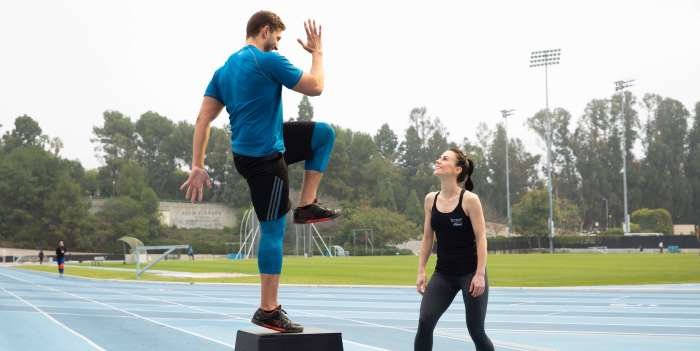
Sleep is not just a time for rest and relaxation; it’s a crucial element in athletic performance and recovery. During sleep, your body repairs and rebuilds muscles, regulates hormones, and strengthens your immune system. Adequate sleep allows your body to function optimally, enabling you to train harder, recover faster, and perform at your peak.
Sleep Deprivation’s Impact on Athletic Performance
Sleep deprivation can significantly hinder athletic performance by negatively impacting various physiological processes. Lack of sleep can lead to:
- Reduced Muscle Repair:During sleep, your body releases growth hormone, which plays a crucial role in muscle repair and growth. Insufficient sleep can impair this process, slowing down muscle recovery and hindering performance.
- Hormonal Imbalances:Sleep deprivation can disrupt the production and regulation of essential hormones, such as cortisol and testosterone. This imbalance can affect muscle growth, energy levels, and overall well-being.
- Impaired Cognitive Function:Sleep deprivation can significantly affect cognitive function, including attention, reaction time, and decision-making. These cognitive impairments can lead to poor performance on the field and increase the risk of injuries.
Strategies for Improving Sleep Quality
To optimize sleep quality and reap its benefits, athletes can implement various strategies:
- Establish a Consistent Sleep Schedule:Going to bed and waking up around the same time each day, even on weekends, helps regulate your body’s natural sleep-wake cycle.
- Create a Conducive Sleep Environment:A cool, dark, and quiet bedroom promotes restful sleep. Consider using blackout curtains, earplugs, or a white noise machine to minimize distractions.
- Avoid Stimulants Before Bedtime:Caffeine and alcohol can interfere with sleep quality. Avoid consuming these substances several hours before bedtime.
- Engage in Regular Exercise:Regular physical activity can promote better sleep, but avoid exercising too close to bedtime.
- Limit Screen Time Before Bed:The blue light emitted from electronic devices can suppress melatonin production, a hormone that regulates sleep. Reduce screen time at least an hour before bed.
The Impact of Technology on Athlete Training

Technology has revolutionized the way athletes train, providing coaches and athletes with powerful tools to enhance performance, optimize recovery, and gain valuable insights into their training process. From wearable devices to sophisticated software, technology has become an integral part of modern athletic training.
Wearable Devices and Their Applications
Wearable devices have become increasingly popular among athletes, offering real-time data on various physiological parameters. These devices, such as smartwatches, fitness trackers, and heart rate monitors, can track metrics like heart rate, distance covered, calories burned, sleep patterns, and even stress levels.
- Heart Rate Monitors: These devices measure heart rate variability (HRV), providing insights into an athlete’s recovery status and training load. A decrease in HRV can indicate overtraining, while an increase suggests adequate recovery.
- GPS Tracking Systems: These devices track an athlete’s movement during training sessions, providing detailed information about distance, speed, pace, and elevation changes. This data can be used to optimize training plans, identify areas for improvement, and analyze performance trends.
- Smartwatches: Modern smartwatches offer a range of features that can benefit athletes, including GPS tracking, heart rate monitoring, sleep tracking, and even workout tracking with specific metrics for different activities.
These devices provide valuable data that coaches and athletes can use to make informed decisions about training, recovery, and performance optimization.
Last Recap
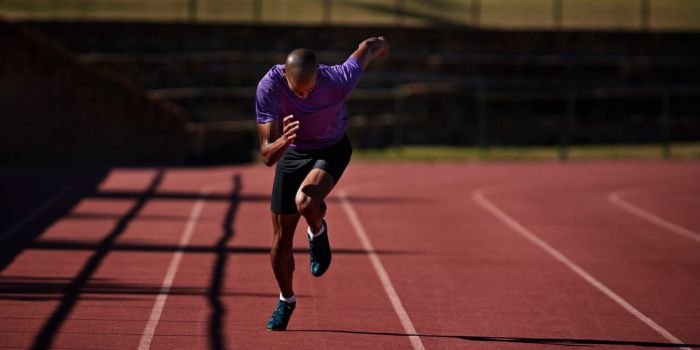
By understanding the intricacies of athlete training and health, athletes can embark on a journey of self-discovery, optimizing their performance and maximizing their potential. From optimizing training programs to fueling their bodies with the right nutrients and prioritizing rest and recovery, athletes can unlock their true potential and achieve their athletic goals.
This exploration underscores the importance of a holistic approach to athletic development, emphasizing the interconnectedness of physical training, nutrition, mental well-being, and overall health. By embracing these principles, athletes can not only achieve peak performance but also foster a sustainable and fulfilling athletic journey.
Popular Questions
What are some common mistakes athletes make when it comes to training?
Common mistakes include overtraining, neglecting proper warm-up and cool-down routines, ignoring nutrition needs, and not prioritizing adequate rest and recovery.
How can athletes prevent injuries?
Athletes can prevent injuries by following a gradual progression in training intensity, incorporating proper warm-up and cool-down routines, listening to their bodies, and addressing any pain or discomfort promptly.
What are some effective strategies for managing stress and anxiety in athletes?
Effective strategies include mindfulness practices, visualization techniques, goal setting, and seeking support from coaches, teammates, or mental health professionals.